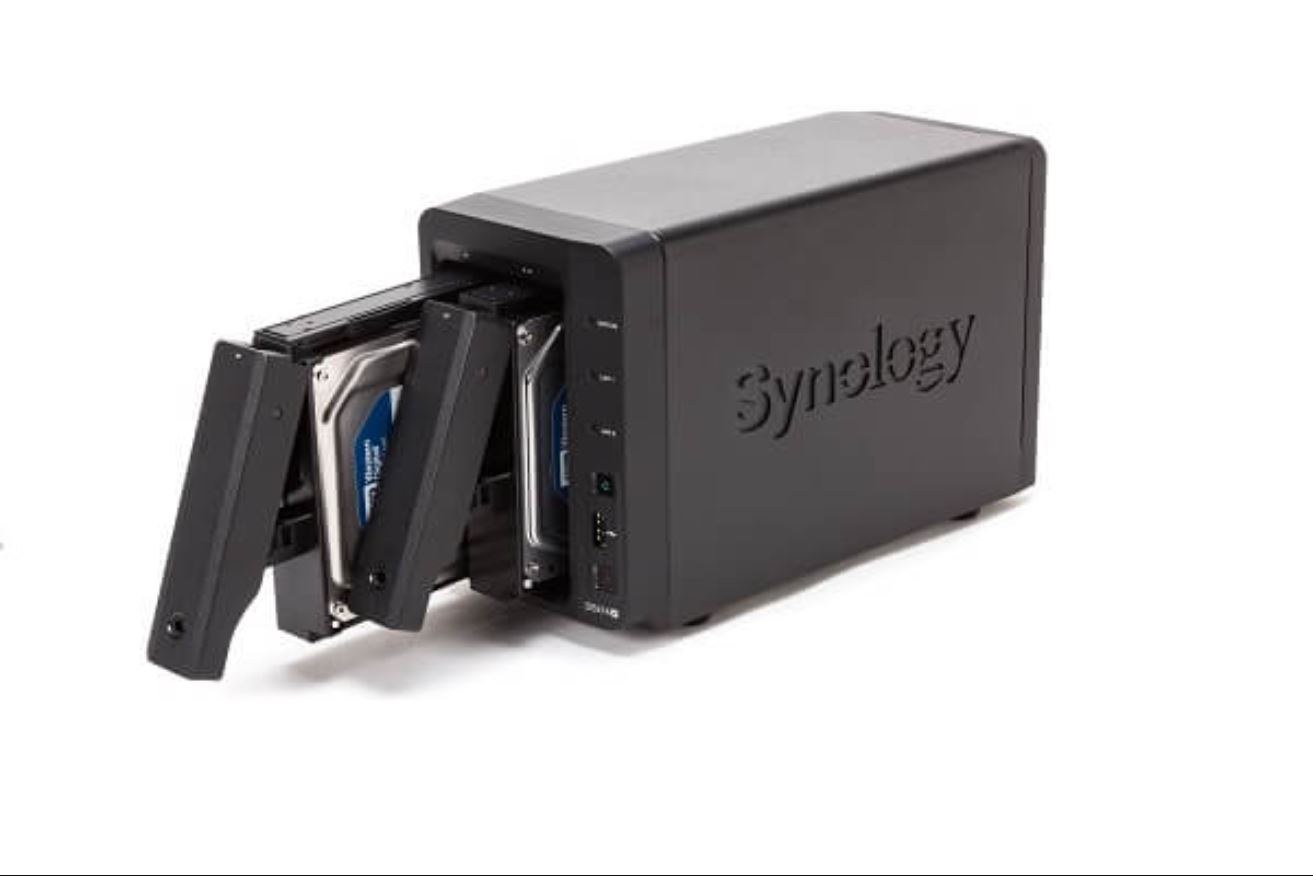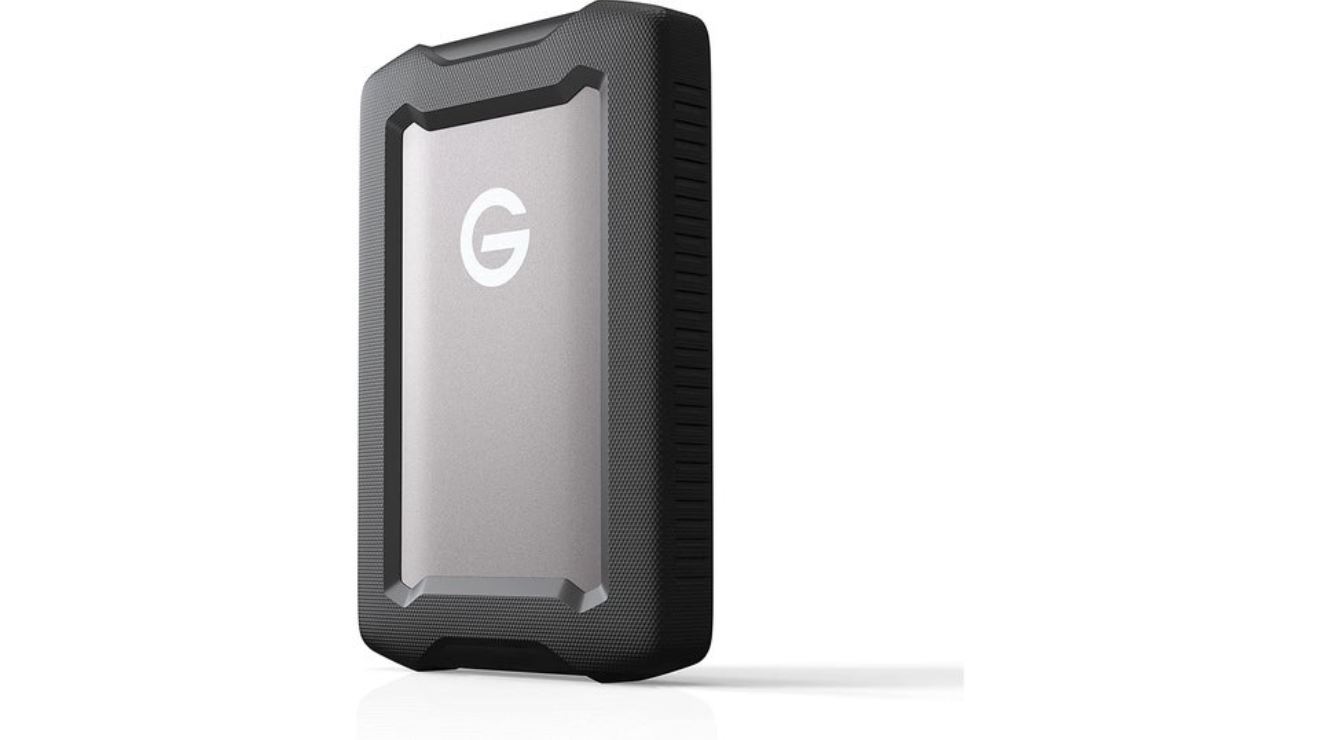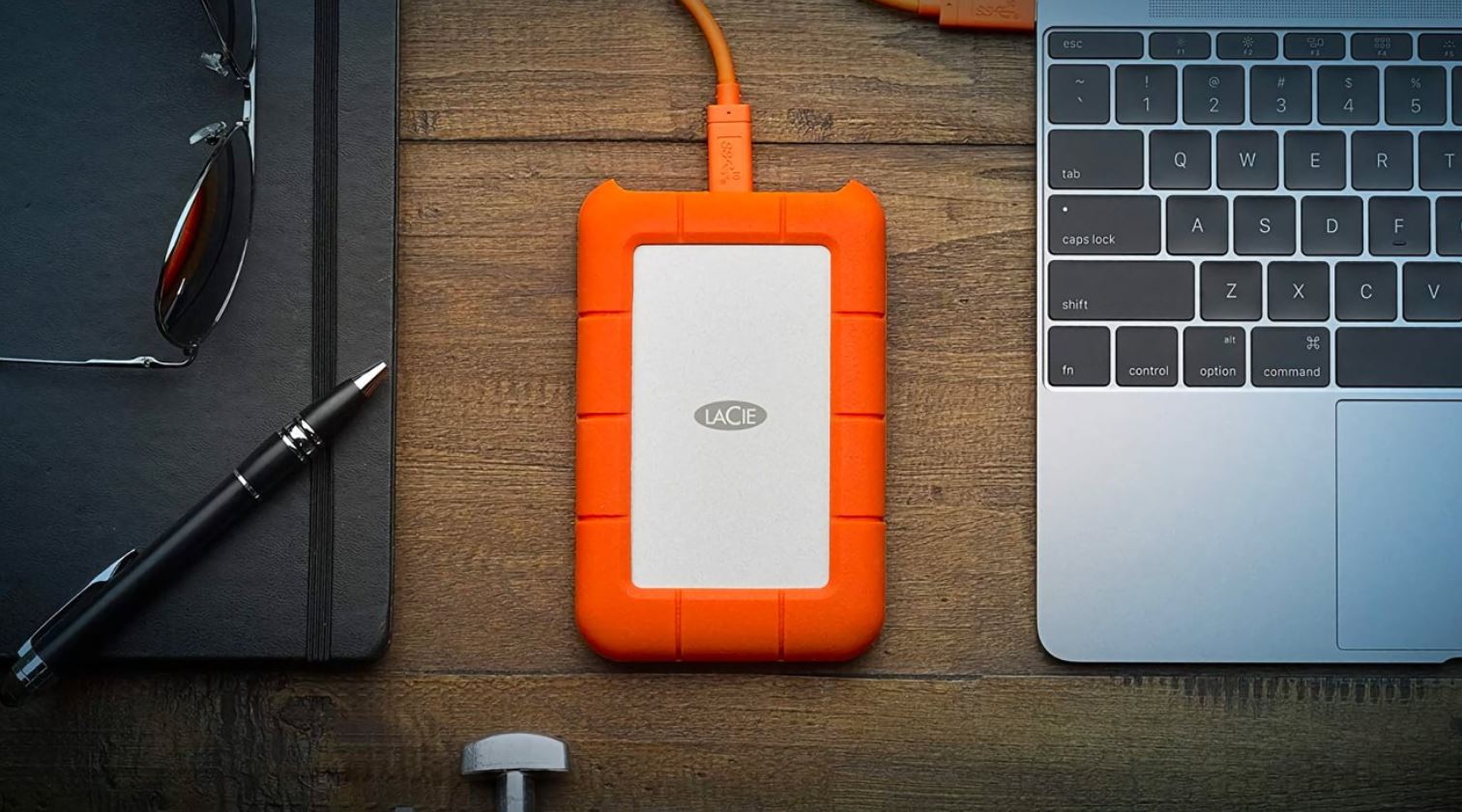Introduction
When it comes to choosing an external hard drive, determining the right size can be a crucial decision. With the ever-expanding amount of digital content we accumulate, finding enough storage space is essential. Whether you need additional storage for work files, personal documents, music, videos, or gaming libraries, selecting the appropriate size will ensure that you have enough room to accommodate your needs.
External hard drives come in a range of sizes, from small portable devices to larger desktop options. Understanding the factors that influence the required size will help you make an informed decision. In this article, we will explore the various factors that you should consider when determining how big of an external hard drive you need.
Factors to Consider
There are several factors to consider when choosing the size of your external hard drive:
- The types of files you plan to store
- The sizes of those files
- The need for backup and duplication
- The potential for future content growth
By assessing these factors, you can accurately assess your storage needs and choose the right external hard drive size that will cater to your requirements.
Factors to Consider
When determining the size of your external hard drive, it’s important to consider several factors to ensure you have enough storage space for your needs. Here are some key factors to take into account:
- Types of files you plan to store: Consider the types of files you will be storing on your external hard drive. Are you primarily storing documents, photos, videos, or a combination of all three? Different file types have varying sizes, so it’s important to anticipate the amount of space each file type will require.
- Sizes of those files: Take into account the sizes of the files you plan to store. For example, documents and spreadsheets typically have small file sizes, while high-resolution images and videos can take up a significant amount of space. If you primarily work with large files, you may need a larger external hard drive to accommodate your needs.
- Need for backup and duplication: Consider whether you will be using the external hard drive as a backup solution. If you plan to store important files and data that need to be backed up regularly, you may need additional space to accommodate these duplicate files. It’s always a good practice to have a backup of your important files to prevent data loss.
- Potential for future content growth: Anticipate your future storage needs. Will you be adding more files to your external hard drive over time? If you expect your content library to grow, it’s wise to choose a larger hard drive that can accommodate your future storage requirements. It’s better to have extra space than to run out of storage later on.
By considering these factors, you can assess your storage needs more accurately and make an informed decision when choosing the size of your external hard drive. Taking the time to evaluate these factors will help ensure that you have enough space to store all your files and allow for future expansion.
Types of Files to Store
When determining the size of the external hard drive you need, it’s important to consider the types of files you plan to store. Different file types have varying sizes, which will greatly impact the amount of storage space required. Here are some common file types and their typical storage requirements:
- Documents and Spreadsheets: Text-based documents and spreadsheets typically have small file sizes. Standard documents such as Word files or PDFs usually range from a few kilobytes to a few megabytes, while complex spreadsheets can be slightly larger. If you primarily work with text-based files, a smaller capacity external hard drive may suffice.
- Photos and Images: High-resolution photos and images can take up a significant amount of space. Whether you’re a professional photographer or someone who enjoys capturing memories, you’ll likely need more storage for your image files. RAW image files can range from several megabytes to tens of megabytes depending on the camera settings, while compressed formats like JPEGs can be smaller. Consider the number of photos you have or plan to take and factor in the file size to determine the appropriate size for your external hard drive.
- Audio Files: If you have a large music library or record audio files, you’ll need to account for the storage needs of these files. The size of audio files depends on the audio format and the quality settings. MP3 files, for example, are generally smaller compared to lossless formats like FLAC. Estimate the size of your music collection and consider whether you’ll be adding more files in the future.
- Video Files: Video files tend to be much larger compared to other file types. The size of video files depends on factors such as resolution, frame rate, and video codec. For example, a high-definition video in 1080p can range from a few hundred megabytes to several gigabytes, while 4K videos are even larger. If you store a lot of videos, especially high-resolution ones, you’ll need a larger capacity external hard drive to accommodate them.
Consider the types of files you plan to store and estimate their sizes to determine the appropriate capacity for your external hard drive. It’s always better to have more storage space than to run out, especially when dealing with larger file types.
File Sizes
Understanding the typical file sizes of different file types is essential when determining the size of the external hard drive you need. File sizes can vary greatly depending on factors such as file format, resolution, quality settings, and compression levels. Here’s a breakdown of common file sizes:
- Text-based Documents: Standard text-based documents like Word files or PDFs typically range from a few kilobytes to a few megabytes. These files have relatively small sizes, making them easy to manage even with limited storage space.
- Images and Photos: Image file sizes can vary depending on resolution, format, and compression settings. For example, a high-resolution JPEG image captured with a decent camera can range from a few hundred kilobytes to several megabytes. On the other hand, RAW image files can be much larger, often in the range of tens of megabytes.
- Music Files: The size of music files depends on the audio format and the quality settings. Compressed formats such as MP3 files are generally smaller compared to lossless formats like FLAC. On average, a three to four-minute song in MP3 format can range from 3 to 6 megabytes, while a lossless format like FLAC can be upwards of 20 to 30 megabytes.
- Video Files: Video sizes can vary significantly based on resolution, duration, and video codec. For example, a 10-minute video in standard definition (SD) with compression can range from 50 to 100 megabytes, while a high-definition (HD) video of the same duration can occupy several hundred megabytes up to a few gigabytes. Ultra-high-definition (4K) videos are even larger, often in the gigabyte range.
When estimating the size of your files and calculating the required external hard drive capacity, consider the number of files you have and their respective sizes. Remember that it’s always a good idea to leave some extra space for future file additions or unexpected storage needs.
Audio Files
Audio files come in various formats and sizes, depending on the audio quality, duration, and compression settings. Understanding the typical file sizes of different audio formats will help you determine the size of the external hard drive you need to store your music collection or audio recordings.
Here are some common audio formats and their average file sizes:
- MP3: MP3 is a widely used audio format known for its good sound quality and relatively small file sizes. On average, a three to four-minute song in MP3 format can range from 3 to 6 megabytes. The actual size may vary depending on the bit rate selected during encoding, with higher bit rates resulting in larger file sizes.
- FLAC: FLAC (Free Lossless Audio Codec) is an audio format that provides lossless compression, meaning the audio quality remains the same as the original source. FLAC files are larger in size compared to MP3s due to their higher audio quality. On average, a three to four-minute song in FLAC format can range from 20 to 30 megabytes.
- AAC: AAC (Advanced Audio Coding) is an audio format commonly used in iTunes and other Apple devices. It offers better sound quality than MP3 at similar file sizes. The average file size of a three to four-minute song in AAC format is similar to that of an MP3, ranging from 3 to 6 megabytes.
- WAV: WAV (Waveform Audio File Format) is an uncompressed audio format that provides top-notch audio quality but results in larger file sizes. On average, a three to four-minute song in WAV format can range from 30 to 50 megabytes. WAV files are commonly used in professional audio production and editing.
When estimating the size of your audio files, take into account the average sizes of the formats you use most frequently. Consider the size of your music collection and any recordings you may have, and determine how much space you will need to store them on your external hard drive.
It is worth noting that the actual file sizes may vary depending on factors such as the audio quality settings and the length of the audio content. Therefore, it is recommended to allocate some extra space on your external hard drive to accommodate future audio files or any unexpected additions to your collection.
Video Files
Video files can take up a significant amount of storage space due to their larger file sizes compared to other types of files. The size of a video file depends on several factors, including the resolution, duration, frame rate, and video codec used for compression.
Here are some common video formats and their approximate file sizes:
- Standard Definition (SD): SD videos usually have a resolution of 480p or 576p. The file sizes of SD videos can range from 50 to 100 megabytes per minute of video footage. So, a 10-minute SD video can occupy around 500 to 1,000 megabytes or 0.5 to 1 gigabyte.
- High Definition (HD): HD videos have resolutions of 720p, 1080p (Full HD), or 1440p. The file sizes of HD videos are larger compared to SD videos due to the higher resolution. Depending on the video codec and compression settings, an HD video can range from 100 to 500 megabytes per minute of footage. A 10-minute HD video can occupy approximately 1 to 5 gigabytes.
- Ultra High Definition (4K): 4K videos have a resolution of 3840×2160 pixels, offering exceptional visual quality. Due to the high resolution, 4K videos have significantly larger file sizes. On average, a 4K video can range from 500 megabytes to several gigabytes per minute of video footage. So, a 10-minute 4K video can occupy around 5 to 30 gigabytes.
When determining the size of an external hard drive for storing video files, it’s important to consider the resolution and quality of the videos you plan to store. If you work with high-resolution or professional-quality videos, a larger capacity hard drive would be necessary to accommodate these files.
Additionally, it’s important to take into account the duration of the videos you work with. If you frequently edit or store long videos, the required storage capacity will be higher compared to shorter videos.
Keep in mind that these file size estimates are general approximations, and the actual file size can vary based on various factors such as video codec, compression settings, and additional video enhancements. Allocating some extra space on your external hard drive is recommended to account for future videos or any unexpected increases in file sizes.
Photos and Images
Photos and images can take up a considerable amount of storage space, especially if you enjoy photography or work with high-resolution images. The file sizes of photos and images vary based on factors such as resolution, file format, and compression levels.
Here are some general guidelines regarding the file sizes of photos and images:
- JPEG: JPEG is a commonly used image format known for its efficient compression. JPEG files vary in size depending on the image resolution and the level of compression applied during saving. On average, a high-resolution JPEG image can range from a few hundred kilobytes to several megabytes. The file size will be larger for images with intricate details or higher quality settings.
- RAW: RAW files are uncompressed image formats that retain the highest level of image detail and quality. RAW files are much larger compared to JPEGs as they contain unprocessed data straight from the camera’s sensor. The file size of a RAW image can range from several megabytes to tens of megabytes, depending on the camera’s specifications and settings.
- PNG: PNG is a lossless image format that supports transparency. PNG files are often used for graphics and images with sharp edges or transparent backgrounds. The file sizes of PNG images are generally larger compared to JPEGs. A high-resolution PNG image can range from a few hundred kilobytes to several megabytes.
- TIFF: TIFF is a flexible image format that supports lossless compression. TIFF files can have large file sizes due to their ability to retain high-quality image data. A high-resolution TIFF image can range from several megabytes to tens of megabytes.
When estimating the size of your photo collection, consider the average file size of the image formats you typically work with. Take into account the resolution of the images and the number of photos you have or plan to have in the future.
It’s important to note that the actual file sizes of photos and images can vary based on various factors. Higher resolution images or images with complex details may have larger file sizes, while images with less detail or higher compression levels may be smaller.
Allowing for additional storage space on your external hard drive is recommended to account for future photos or any unforeseen increases in file sizes.
Games and Software
If you are an avid gamer or frequently use software applications, it’s essential to consider the storage requirements for your games and programs when choosing the size of your external hard drive. Games and software can have varying file sizes, depending on factors such as graphics quality, complexity, and the number of files associated with them.
Here are some important considerations when estimating the storage needs for games and software:
- Game Sizes: The file sizes of games can vary significantly depending on various factors, including the graphics quality, game length, and the presence of additional downloadable content (DLC). Modern AAA titles can range from several gigabytes to over 100 gigabytes in size. It’s important to check the system requirements and recommended storage space for each game you wish to install on your external hard drive.
- Software Applications: Software applications such as graphic design programs, video editing software, or 3D modeling tools can also have large file sizes. These applications often require additional space for temporary files and project assets. Be sure to consider the storage requirements of the software applications you use or plan to use in the future.
- Update and Patch Files: Games and software applications frequently receive updates and patches to improve performance, fix bugs, and introduce new features. These updates can range from a few megabytes to several gigabytes in size, depending on the nature of the update. Leaving enough space on your external hard drive to accommodate these updates is important to ensure you can keep your games and applications up to date.
- Save Files and Settings: Some games and software applications generate save files, configurations, and settings that are stored locally. While these files usually don’t take up significant space individually, over time, they can accumulate and contribute to the overall size requirements of your storage. Consider the number and size of these files when estimating your storage needs.
When planning for games and software on your external hard drive, it’s recommended to allocate sufficient space to account for your current library and any potential additions in the future. Additionally, consider leaving extra room for updates, patches, and save files to ensure smooth operation and avoid running out of storage space.
Backing Up your Computer
One of the primary reasons to invest in an external hard drive is to create backups of your computer’s data. Backing up your computer is crucial for safeguarding your important files and ensuring that you have a reliable copy in case of data loss, system failure, or accidental deletion. When considering the size of your external hard drive, it’s important to consider the amount of storage required for your backups.
The storage needs for computer backups can vary depending on several factors:
- Size of Data: Assess the total size of the data you want to back up, including documents, photos, videos, music, and any other important files. Keep in mind that your data size may grow over time as you continue to create new files, so it’s wise to allow for some extra space for future backups.
- Frequency of Backups: Consider how often you plan to back up your computer. If you back up your computer daily or weekly, you may require more storage space to accommodate multiple copies of your data. On the other hand, if you back up your computer less frequently, you may need less storage space.
- Backup Software: Take into account the backup software you use and its specific requirements or limitations. Some backup software allows you to compress and reduce the size of your backups, while others may create full copies of your data, resulting in larger file sizes. Be sure to check the backup software’s documentation or settings to better estimate the required storage space.
When backing up your computer, it’s important to consider not only the size of the data but also your personal backup preferences. Some individuals may choose to back up their entire system, including the operating system and applications, while others may prefer to back up only specific folders and files.
Remember that backups are essential for protecting your valuable data, so it’s a good practice to allocate sufficient storage space on your external hard drive to accommodate the size of your backups. Additionally, periodically assess the growth of your data and adjust your storage needs accordingly to ensure you always have enough space for reliable and up-to-date backups.
Extra Space for Future Use
When deciding on the size of your external hard drive, it’s crucial to consider the potential for future storage needs. As technology advances and our digital content continues to grow, having extra space on your external hard drive provides room for expansion and accommodates any unforeseen storage requirements.
Here are some reasons why having extra space on your external hard drive is beneficial:
- Growth of Digital Content: Over time, we tend to accumulate more digital content, whether it’s photos, videos, music, or documents. With the increasing availability of high-resolution media and larger file sizes, ensuring that you have ample storage space for future files is important to avoid running out of space.
- New Projects and Hobbies: You may develop new interests or hobbies that involve creating and storing digital files. Whether it’s exploring photography, video editing, music production, or any other creative pursuit, these activities can quickly consume storage space. Allocating extra space on your external hard drive allows you to pursue new projects without worrying about limited storage capacity.
- Software Updates and Upgrades: As software applications undergo updates and upgrades, they often require additional space for installation and temporary files. Having extra space on your external hard drive ensures that you can accommodate these updates without having to constantly manage and delete files to free up space.
- Long-Term Data Storage: External hard drives are also commonly used for long-term data storage, such as archiving important files and documents. It’s a good practice to have extra space available for storing these files, as they may accumulate over time and require additional storage capacity.
By having extra space on your external hard drive, you can future-proof your storage needs and avoid the hassle of constantly upgrading or managing your storage. It provides flexibility to adapt to new digital content, projects, and software requirements, ensuring that your external hard drive remains a reliable and convenient storage solution for years to come.
Conclusion
Choosing the right size for your external hard drive is a crucial decision to ensure that you have enough storage space for your needs. By considering various factors such as the types of files you plan to store, their sizes, the need for backups, and the potential for future content growth, you can accurately estimate the required size.
When it comes to storing different types of files, such as documents, photos, videos, or audio files, it’s important to understand their typical sizes and variations. This knowledge allows you to estimate storage needs more accurately, ensuring that you choose an external hard drive with sufficient capacity to accommodate your files.
Moreover, considering the storage requirements for games, software applications, and the need for backups ensures that you have the right amount of space to store all your digital content. Additionally, leaving some extra space for future use is highly recommended to accommodate the growth of your files over time.
By selecting an external hard drive with the appropriate size, you can enjoy the convenience and peace of mind that comes with having ample storage space for all your files. Remember to regularly assess your storage needs, take into account any changes in file sizes or content growth, and be proactive in managing your storage to optimize its efficiency.
So, take a moment to evaluate your storage requirements and make an informed decision about the size of your external hard drive. By doing so, you can ensure that you are equipped with enough space to meet your current and future digital storage needs.

























